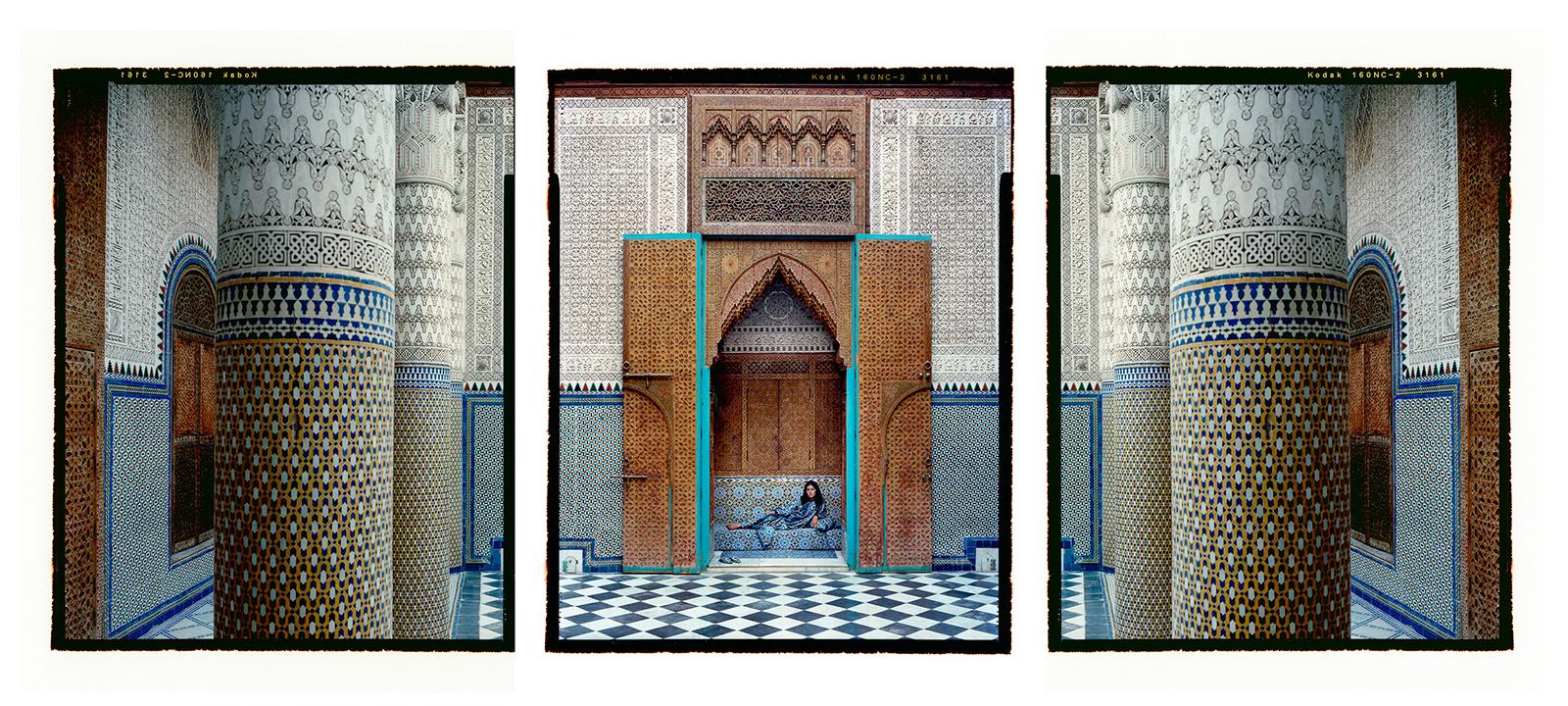Wondrous Worlds: Art & Islam Through Time & Place explores the long history, vast geographic expanse, and remarkable diversity of works of art in the Islamic world. Organized by and drawn from the collections of The Newark Museum of Art, Wondrous Worlds features more than 100 works in nearly all media, including carpets, costumes, jewelry, ceramics, glassware, metalworks, prints, paintings, and photographs. Contemporary works from artists Rachid Koraichi and Victor Ekpuk, and calligrapher Hassan Massoudy are shown alongside works from as early as the ninth century. Highlights of the exhibition include dazzling lusterware from Iran and Spain, delicate prayer rugs from Turkey and India, a majestic pair of early-20th-century Egyptian applique tent hangings and Harem #1 by the Moroccan-American photographer Lalla Essaydi.
Wondrous Worlds opens with an introduction to the Five Pillars of Islam—Declaration of Faith, Daily Prayers, Charity, Fasting for Ramadan, and the Hajj—to provide context and a distinctive view into the function, artistry, and cultural histories of the objects. The exhibition then expands upon five themes:
Internationalisms: Now and Then highlights the long history of inter-continental trade and the role that the Hajj pilgrimage plays in promoting international interconnections. The trade of Turkish textiles to Morocco, English and Dutch textiles inspired by Indonesian prints that were exported to Africa, and ceramics traded between China, Iran, and Turkey are all featured in this section.
Elegant Epigraphy: Writing as Art delves into the power of the written word, not only through the holy text of Islam, but also through histories and poetry written in a variety scripts representing a diversity of languages including Arabic, Farsi, Nsibidi, Turkish, and Urdu.
Hospitality: Fasting, Feasting, and Fun celebrates the domestic arts. An installation of a setting for a Moroccan feast features a Rabat carpet, leather cushions, a wooden screen, and ornate metal table settings. Glorious ceramics, paintings, and musical instruments from other regions are also highlighted.
Modest Beauty: Dress, Fashion, and Faith positions silk, velvet and sequined costumes alongside ornate jewelry fashioned from diamonds, pearls, emeralds, jade, gold, and silver.
Architecture and its Offspring highlights architectural legacies displayed in carpets, printed textiles, furniture, tile-works, and contemporary sculpture.
The Wondrous Worlds exhibition catalogue is available to purchase through the Carlos Museum Bookshop.
For information about programs related to this exhibition, visit our calendar here. To view recordings of programs held in conjunction with this exhibition, click here.
Press
Press release
Exhibition Images:
Jobbana Covered Jar with Interlocking Ring Motifs
Inscribed in Thuluth Script, Hand of Fatima Charm with Six-Pointed Star
Khayamiya Panel with Calligraphic, Geometric and Architectural Motifs
Reading the Miracle of Splitting of the Moon (Shaq-ul-Qamar)
Double Portrait of Mughal Emperor Shah Jahan (1592–1666) and Empress Mumtaz (1593–1631)






